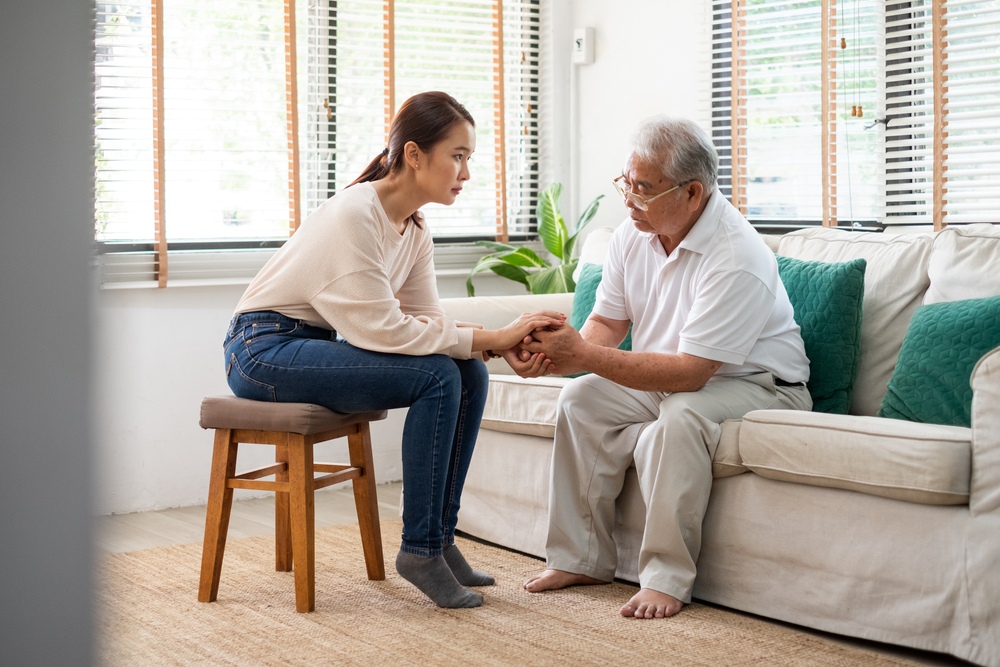According to the World Health Organization, depression is a common mental disorder, affecting 280 million people globally. Older adults and depression is a serious problem that often goes undiagnosed and untreated. In fact, studies show that more than 2 million of the 34 million Americans age 65 and older suffer from some form of depression. This is a concerning issue as depression can lead to deteriorating physical health and an increased risk of suicide.
It is crucial to address this issue and provide support to help those dealing with elderly depression. Unfortunately, there is a general lack of knowledge and awareness of the issue among the general population and medical professionals. For this reason, learning how to identify signs and symptoms of depression can help older individuals receive treatment to help battle this condition.
Understanding Depression in Older Adults
Understanding older adults and depression is crucial in identifying and addressing this health issue. This section will cover the causes and risk factors, symptoms and signs of depression, and differences between depression in older and younger adults.
Causes and Risk Factors
Depression in older adults can be caused by various factors, such as physical illness or losing a loved one. Some of the most common risk factors for depression in older adults include:

- Physical health problems such as cardiovascular disease, Parkinson’s disease, and chronic pain
- Social isolation or loneliness
- Retirement or loss of a sense of purpose
- Family history of depression
- Alcohol or substance abuse
Symptoms and Signs of Depression
Depression in older adults can manifest differently than in younger people. It’s important to be aware of the common symptoms and signs of depression in older adults, including:
- Persistent sadness or feelings of being “down”
- Lack of energy or motivation
- Changes in appetite or weight loss
- Difficulty sleeping or excessive sleeping
- Withdrawal from social activities or hobbies
- Loss of interest or pleasure in activities they formerly enjoyed
- Irritability or anxiousness
- Increased physical complaints such as headaches or body aches
- Difficulty remembering or concentrating
Differences Between Depression in Older Adults and Younger People

Depression in older adults differs from depression in younger people in several ways. Older adults tend to experience more physical symptoms such as pain, fatigue, and cognitive decline. They may also resist seeking professional help or be more likely to attribute their depression to external factors such as grief or loneliness. Additionally, older adults may be taking multiple prescription drugs due to co-occurring health problems, which can interact with depression medication.
Understanding depression in older adults is crucial in identifying and addressing this health issue. Depression in older adults can be caused by various factors, and it manifests differently than depression in younger people. Identifying and treating depression in older adults is imperative as it can lead to an increased risk of suicide and deteriorating physical health.
How to Help an Older Person with Depression
There are multiple ways to learn how to help an older person with depression. Doing so can significantly affect an individual’s well-being, even potentially saving a life. Here are some ways to offer support for an older adult with depression:
Encouraging Them to Seek Professional Help
 The first step in helping someone with depression is encouraging them to seek professional help. While you may offer emotional support and understanding, only a qualified professional can diagnose and treat depression. You can suggest they speak with their primary care physician, a mental health professional, or research facilities or programs specially catered to geriatric depression.
The first step in helping someone with depression is encouraging them to seek professional help. While you may offer emotional support and understanding, only a qualified professional can diagnose and treat depression. You can suggest they speak with their primary care physician, a mental health professional, or research facilities or programs specially catered to geriatric depression.
Addressing Physical Health Issues
Depression can also be linked to physical health problems. Addressing any physical health concerns could help alleviate depression symptoms. This could include encouraging them to maintain a healthy diet and sleep schedule or to get regular checkups. If you suspect their physical health exacerbates the depression, encourage them to seek medical care.
Staying Positive and Empathetic
Having a positive and empathetic outlook can help support someone with depression. Listening to their needs and avoiding dismissive or invalidating comments is crucial. Show compassion, and be willing to support them in attending appointments or engaging in activities.
Using the HandsFree Health WellBe® Chat
One technological solution for helping and supporting someone with depression is the HandsFree Health WellBe Chat. This virtual health assistant is a designed conversational feature that uses AI to communicate with seniors, the disabled, the homebound, and caregivers. The feature can be used on the WellBe pendant, smartwatch, and speaker.
Conclusion: Addressing Depression in Older Adults
Depression is a severe issue that can affect older adults and negatively influence their overall quality of life. Addressing older adults and depression is a collective responsibility that requires the collaboration of friends, families, and medical professionals.
To help an older loved one battling depression, shop HandsFree Health’s voice-activated devices to monitor their health and to stay in constant communication. Our devices will help your loved ones Be Heard, Be Healthy, Be Empowered.
